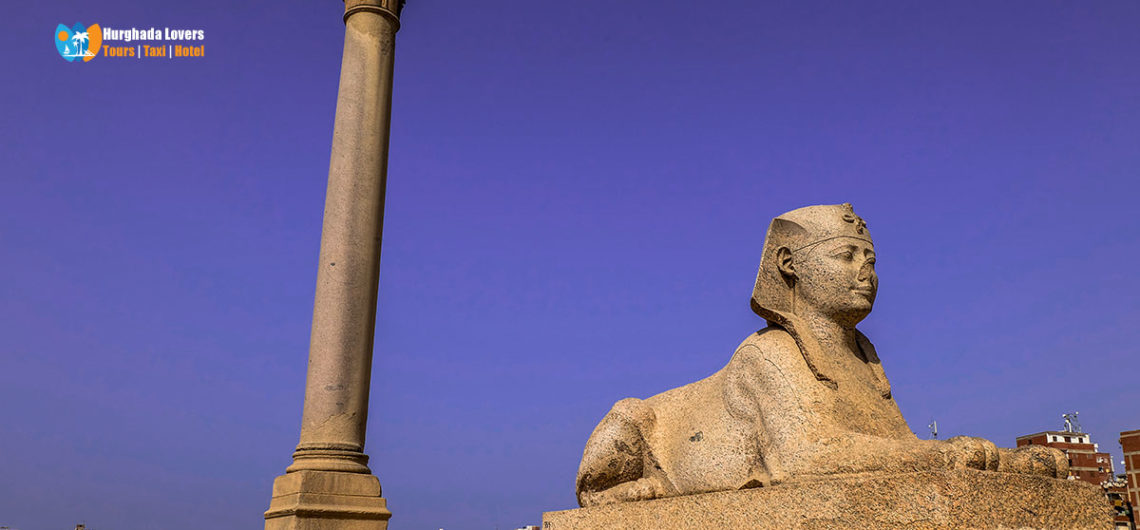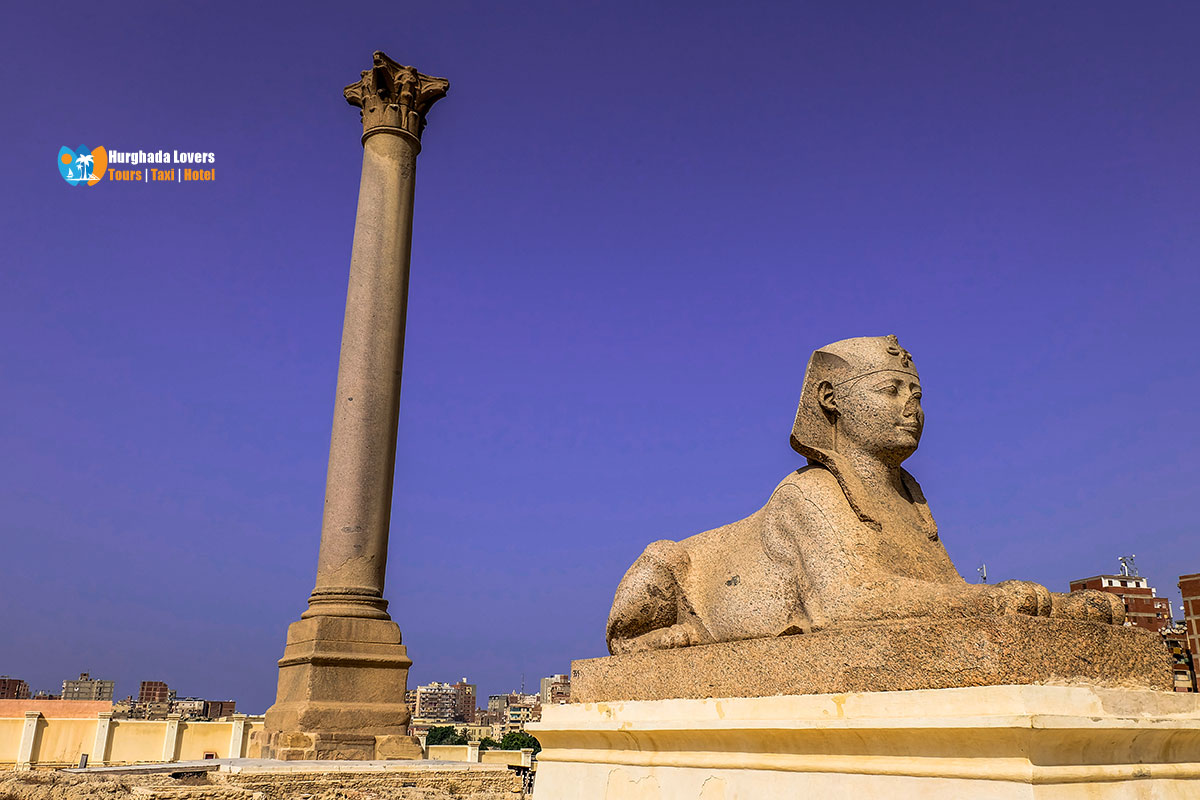Pompey’s Pillar or (the Masts’ Pillar) Egypt | Best Things to Do in Alexandria
The site from interior & The date of the discovery and construction of the most important Pharaonic Monuments of Alexandria Tours.
History Of Egyptian & information about Pompey’s Pillar, the history of the monuments surrounding the pillar, the reason for the label, what are the tickets prices, visits dates and the administrative structure to start your tourist trip & Things to Do in Egypt.
Hurghada lovers Offer Luxury Hurghada to Pyramids Tours | El Gouna to Pyramids Tours | Makadi bay to Pyramids Tours | Sahl Hasheesh to Pyramids Tours | Soma bay to Pyramids Tours .
Pompey’s Pillar:
The pillar was built in 292 AD. as a glorification of the Roman emperor Diocletian. It was built by the people of Alexandria at the time, where the pillar was in the middle of the temple of Serapium above the hill of Bab Sedra and between the tombs of the Muslims and the plateau of Kom Al-Shoqafa.
The story begins when the people of Alexandria passed against Roman rule and a major revolution, which prompted Emperor Diocletian to come with the Roman army and surround the city and surrender to the lack of food and extensions, but the emperor distributed free wheat to the people of Alexandria instead of killing or punishing the protesting people.
He also completely pardoned the detainees and rioters and lifted the siege. The inhabitants of Alexandria built this pillar in recognition of what he did. It was created by Commander Domitian or Achilleus.
Pompey’s Pillar is about 27 meters long, 270 cm in diameter and the total diameter is 230 cm and the Cornish-style top is made of pink granit.
We will find the rest of the commemorative text engraved on the base of the pillar to immortalize the role of the emperor and dedicate and commemorate it as well as a collection of stones from the Pharaonic period under the name of King Ramses II “Egyptian Pharaohs kings“.
At the back of the base of the pillar is a collection of stones bearing the names of New Kingdom-era Pharaonic Civilization kings such as King Ramses II, King Sethi II and King Merenptah.
You will see a rocky staircase between Pompey’s Pillar and the Great Court as well as the altar in the middle of the Courtyard there are also several stairs carved into the rock at long distances that lead to the basements that were used to store statues in the Great Temple of Serapium as well as niches carved in the wall to keep the papyri In the Small library of the temple and add small statues.
The monument surrounding Pompey’s Pillar:
We found in the area vases in granit dating from the 19th dynasty of The New Kingdom era in addition to 3 statues in shape of sphinx in rose granit and another in black granit, but you will find that its head is dilapidated, and it bears the name of the king Horemheb last King of dynasty 18.
You will see 3 pink granite statues of King Psametic I of the 26th Pharaonic Dynasty, as well as a statue of King Ramses II sitting on the throne, holding in his hand the royal scepter and another statue of King Ramses II in black granit.
Archaeologists have discovered that the reason for the presence of Pharaonic monuments next to Pompey’s Pillar, which Queen Cleopatra presented as offerings to the temple of Serapis, known as the Temple of Serapium.
The reason for calling the pillar the Pillar of Masts:
In Arab times, it was named after the imposing height of all the columns that surrounded it, which resembled the masts of war ships, and was later named the mast column, as the fishermen of the sea saw it from long distances as a mast in the middle of a set of columns.
It is believed that the Roman commander Pompey was buried and that the ashes of his head were kept in a vase placed above the pillar, so it is called Pompey’s Pillar, but it was later discovered that the correct name was the Pillar of Masts, since the pillar was built in 291 AD and Commander Pompey died in 300 BC and it is therefore impossible to keep his head until then.
The Crusaders were the first to give the name of Pompey’s Pillar to this column during their invasion of Egypt.
Who built the Pillar of Masts?
Commander Domitian with the people of Alexandria.
Date of discovery of the Pillar of Masts:
Opening hours
You can visit the archaeological site from 9:00 to 17:00 every day of the week.
Ticket prices for the Pompey’s Pillar:
The price of an entrance ticket to Pompey’s Pillar starts at 20 Egyptian pounds per person.
Author & Writer: Tamer Ahmed Abd elfatah Yousif
Pompey’s Pillar Alexandria | History The Masts’ Pillar column in Egypt


